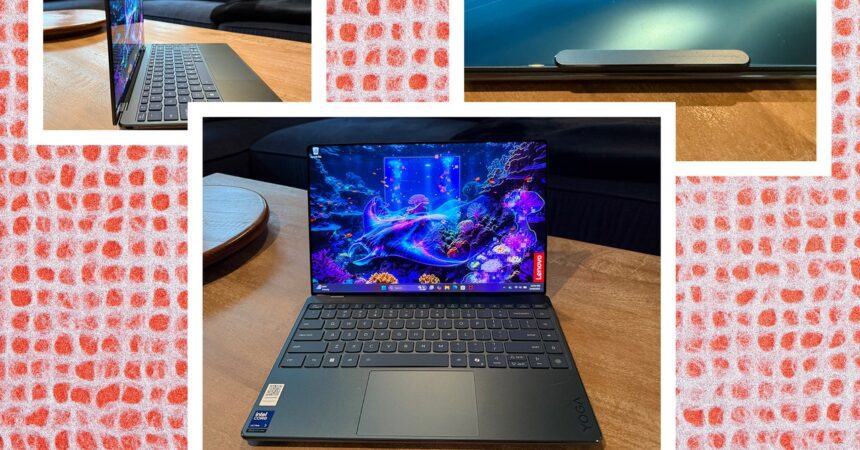Lenovo’s Yoga laptop lineup has grown quite extensive. Among the models available are the Yoga 9i, Yoga Pro 9i, Yoga Book 9i, and the latest addition, the Yoga Slim 9i. There are so many variations, it’s understandable if you find it challenging to differentiate them all.
The essential details about the Slim 9i reveal that it is positioned as the flagship model within this lineup, boasting a stylish design, Copilot+ PC features, and a unique webcam technology known as camera-under-display (CUD) that conceals the camera behind the LCD. (This is not a completely new concept, as we’ve seen a similar approach in a smartphone released by ZTE a few years back.)
Teal Shimmer
Before exploring that intriguing camera feature further, let’s focus on the overall design. While primarily constructed from aluminum, the cover of this 14-inch laptop showcases a striking glass finish in the “Tidal Teal” color, capturing attention but potentially being too ostentatious for some tastes—perhaps contributing to the decline of glass lids in recent years.
Photograph: Christopher Null
The device features rounded corners, with the only sharp edges found where the glass lid ends. Although there isn’t a visible notch for the webcam, a bulge protrudes on the back of the cover to accommodate the camera. Thus, it’s more accurately described as being “behind the display” rather than “under,” an important distinction that results in a noticeably bulbous appearance that may either be appealing or off-putting. A privacy shutter switch is conveniently located on the laptop’s side.
Lenovo has a strong reputation for delivering a superior typing experience, and the Slim 9i 14 exemplifies this with its spacious edge-to-edge keyboard layout and well-responsive keys, despite a surprisingly compact trackpad. While I prefer this smaller trackpad design, users who are accustomed to larger, expansive trackpads may find it limiting. Additionally, five “Quick Keys” located on the right side of the keyboard provide easy access to various power and audio settings, a fingerprint reader, and other useful features.
Photograph: Christopher Null










